News
What happened to Steve Smith, the T20 batsman?
 OPINION
OPINIONSteve Smith's diminishing impact in T20 cricket has put him in an uncharted territory where he is not the right fit in an Australian batting unit
IPL 2013, Match 19. Playing his first game of the season, Steve Smith walked out to bat at number four, in the 15th over of the innings. He scored an unbeaten 39 off 16 deliveries. On the second ball of the 20th over, Smith played an audacious reverse scoop off Dwayne Bravo over a squarish third-man region for six. It was an outrageous stroke and a quintessential finisher’s knock that created the match-winning difference for Smith’s Pune Warriors.
That was a time when Smith was restructuring his career. Initially selected as a supposed successor of Shane Warne, he invested more in his batting when those expectations didn’t transpire.
Now, he was doing everything with the bat. It was the same year in which he made his Test return and went up the ranks with a couple of Ashes hundreds, at both home and away. In T20s, he did a fair job as a finisher. The Indian Premier League saw it in a good amount. Between the 2012 and 2014 season, Smith batted 20 out of his 28 innings at number five and six, scoring 474 runs at an average of 33.9 while striking at approximately 130. The strike-rate is not a real deal breaker but he did the job for his side in those times. Along with the aforementioned instance, knocks of 44* from 22 balls in 2012 and 28* from 21 balls in 2014 comes to mind.
His versatility was in full pomp. He was efficient against spinners and used the pace of the seamers to his advantage, finding boundaries in unorthodox ways.
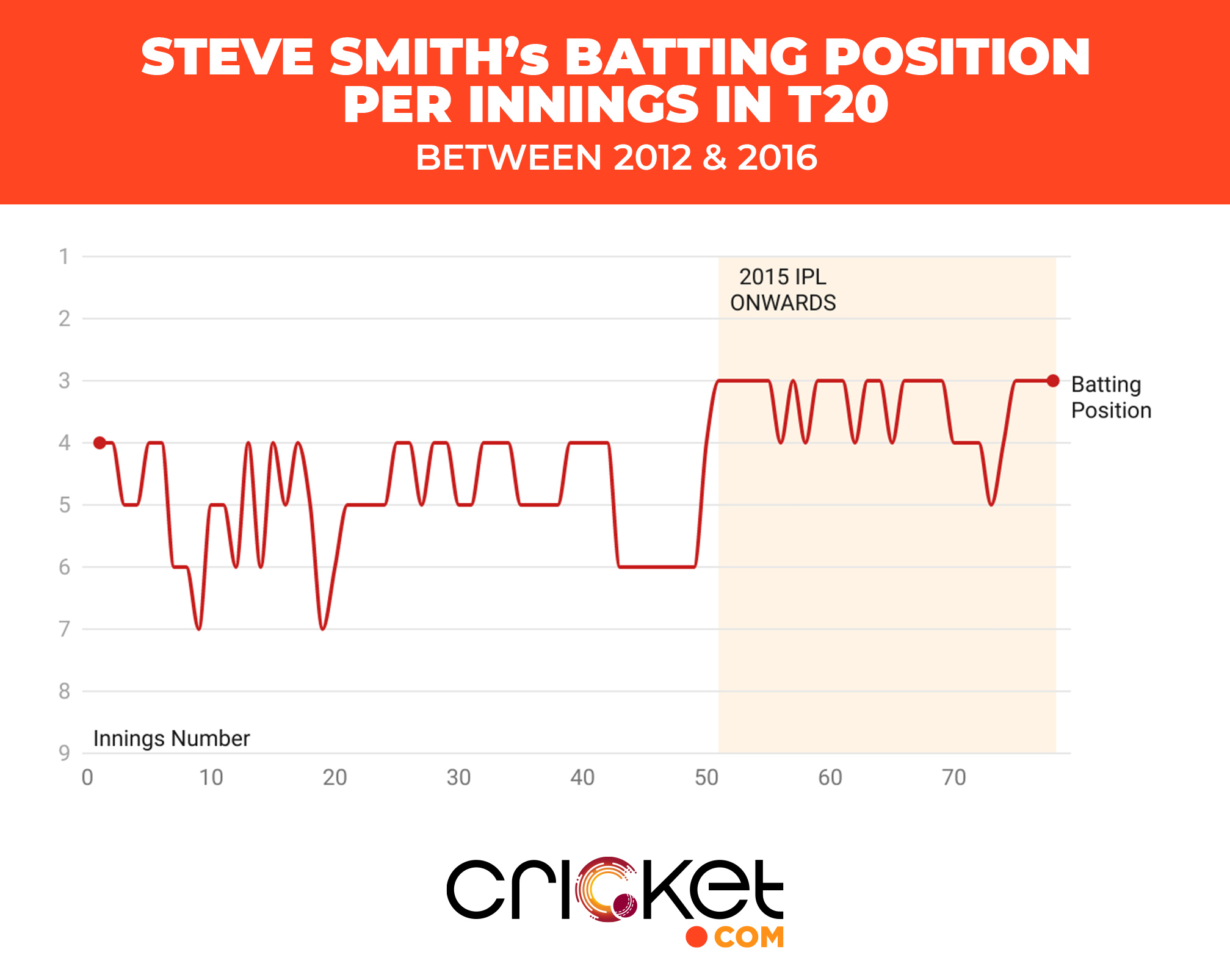
And, combine it with his consistency at international level. Smith produced heaps of runs irrespective of the format. Consequently, he moved his way to number three in the IPL set up. The turnaround was complete, that too with an icing on the cake - a hundred in the 2016 IPL.
*****
However, the white-ball texture of that redemption has not blossomed into a long-time product. When the par score in T20 cricket has observed an ascension, Smith’s development in the shorter formats hit a stasis.
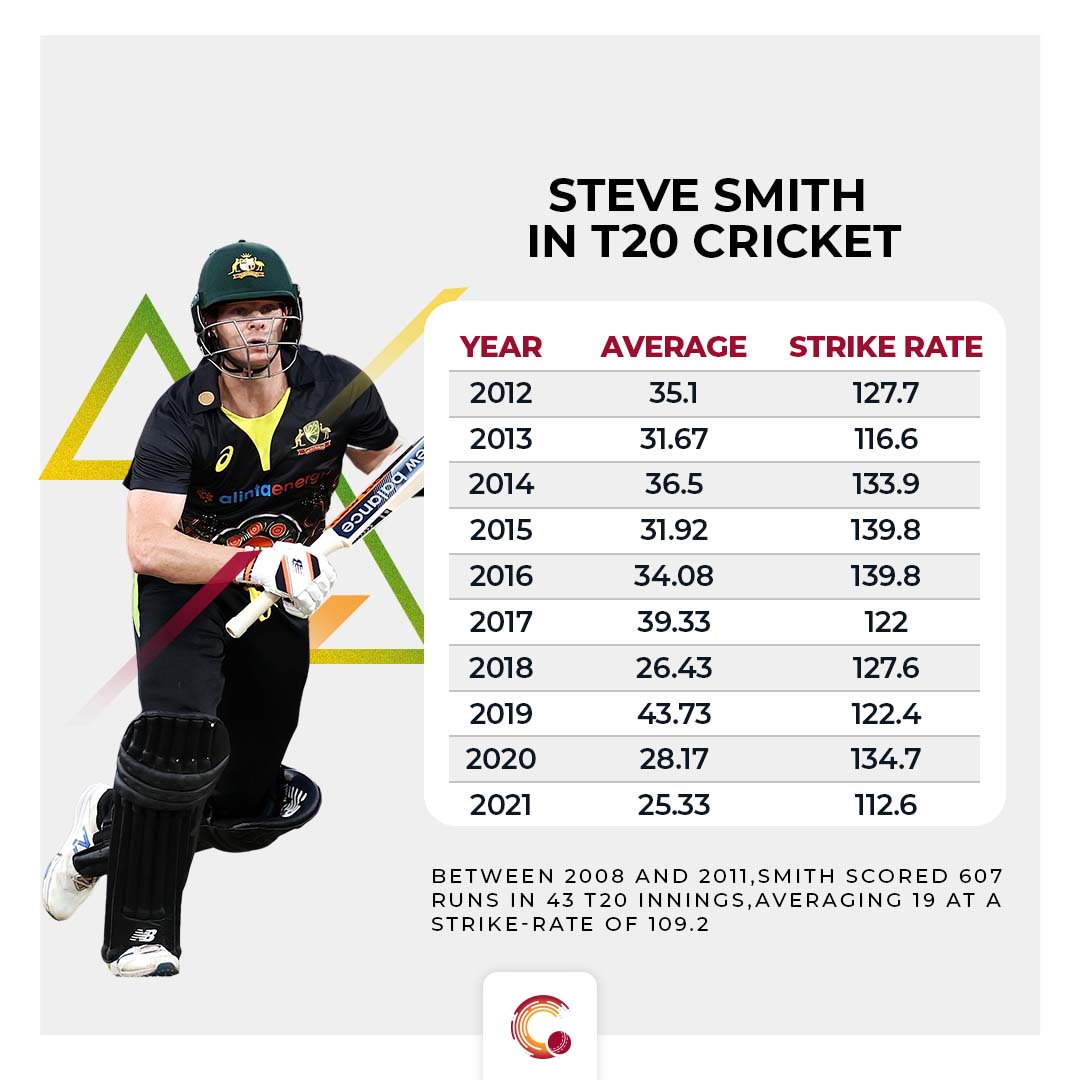
There is a clear dip in the strike-rate since 2017 and a fall in average since 2018. The latter is inexplicable given Smith has batted 49 out of his 71 T20 innings since 2017 in the top three.
On the strike-rate front, Smith’s approach to innings building was second to none during the fruitful cycle. Now, it is just another aspect that tells the tale of his slump.
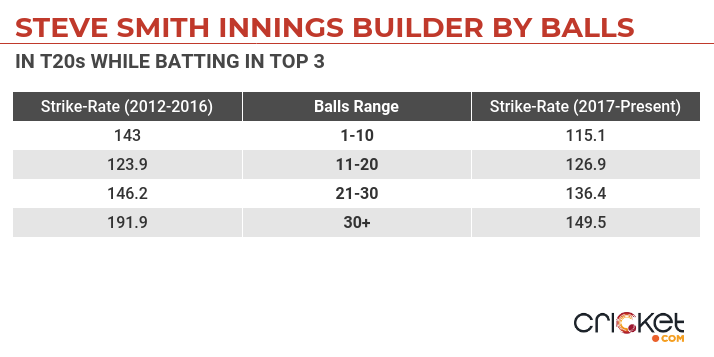
Overall, Smith’s numbers against spin in these two cycles have become better now. He averages 49.1 against the tweakers since 2017 as compared to 41.1 in the preceding five years while maintaining a similar strike-rate (around 122). It is the pacers who have troubled him - average falling to 29.4 from 35.3 and strike-rate dropping by 5 runs to 133.1.
What happened there? Smith’s biggest strength, like many of the other T20 batters who are more renowned for their prowess against the red ball, is finding gaps. Smith’s preferred area against pace used to be the cover and the mid-wicket region. The front of square region on either sides produced 38% of Smith’s runs in the fruitful cycle. The proportion is similar since 2017 but the strike-rate has fallen - from 119 to 84 in covers and from 178 to 152 in the mid-wicket region. There is an alarming drop in the fine-leg region as well.
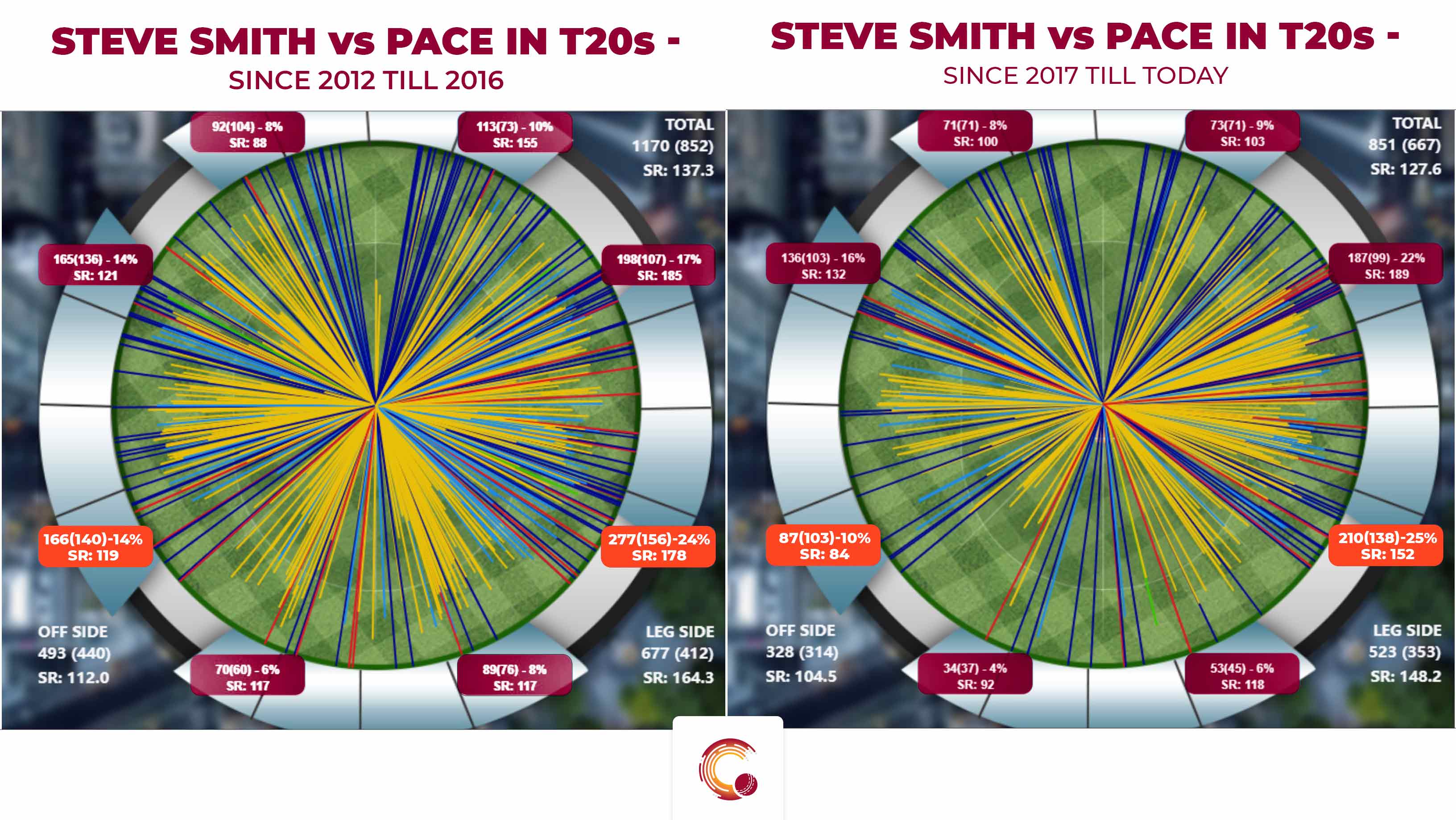
Worse, he averages only 9.8 on cover drives, getting out six times since 2017. Inside out, 8.3 runs for four dismissals. The shots that bring most runs on the mid-wicket fence - the pull has cost him eight innings at 22 runs apiece while the slog has come at 14.7 for three dismissals. He is getting caught at the boundary more often than not.
Finding gaps is an art that requires you to be in constant hustle with the game. Smith missed most of the cricket in 2018. He also suffered an elbow injury that has troubled him ever since his come back. Are those two factors affecting his batting or is it just that the fielding captains are plugging the gaps? The pandemic also did not help.
Smith has been completely neutralised in his last few T20 assignments. Since cricket resumed post the pandemic break, the right-hander has averaged only 24 at a strike-rate of 124.1 in 27 innings. Desperate for runs, he has played some ugly hoicks in this period. In the first half of IPL 2021, Harsha Bhogle described one such slog as, “He was cutting a tree there.” It was an attempt that can make a tailender wince. Watching his head fall over the off stump while forcingly slogging the ball in the on-side is a common sight now.
*****
Smith has missed the last three T20I series for Australia. A prime reason why he was picked for the T20 World Cup was Australia’s disastrous results in West Indies and Bangladesh. There was a complete annihilation against spin. However, amongst all the chaos, Mitchell Marsh stood up, and is expected to retain the number three spot. Smith is the only senior member who has his optimal position challenged. Glenn Maxwell’s brilliant IPL season will persuade Australia to allow him as many balls as possible in the middle-overs which further complicates Smith’s position in the XI.
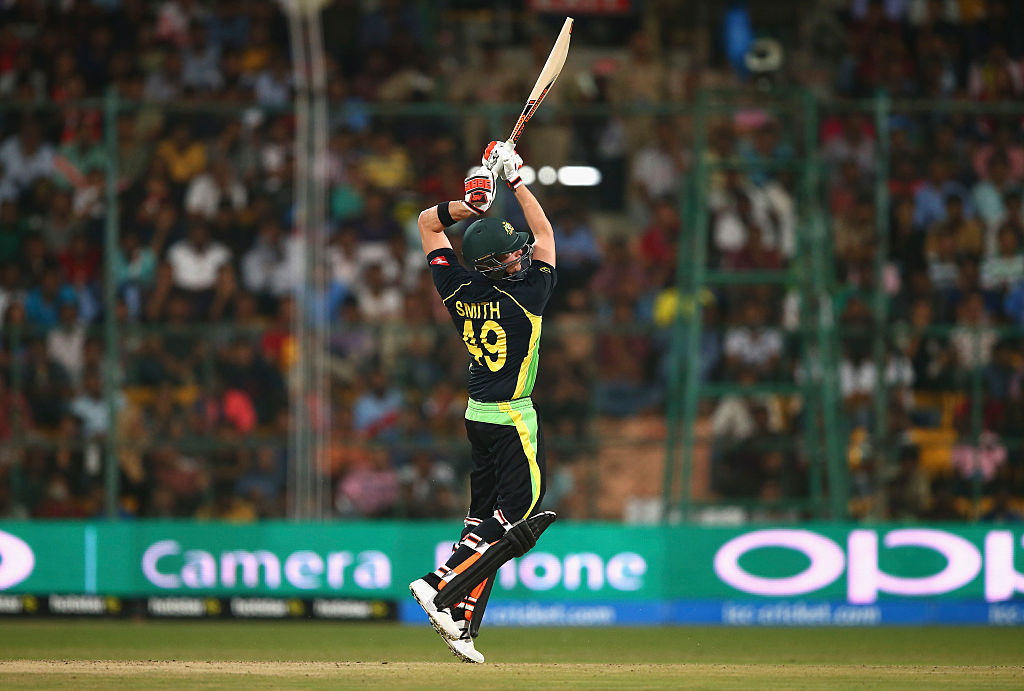
At present, the only role for Smith seems to be of a spin negotiator but without any degree of explosiveness. His inclusion will come at the cost of Marcus Stoinis, who has better chances of success at five with his power-hitting skills.
It is an uncharted territory for Smith where he is not the best fit for the XI in an Australian side. But T20 cricket does not always paint your best batter overall as the most suitable asset in this format. Joe Root is not a part of England’s T20 squad. Virat Kohli’s impact in T20 cricket has mitigated over the last one year. Kane Williamson has value in the New Zealand side largely because they are not a power-hitting unit.
Australia are not a convincing T20 batting unit either but there lies better options in their quiver.